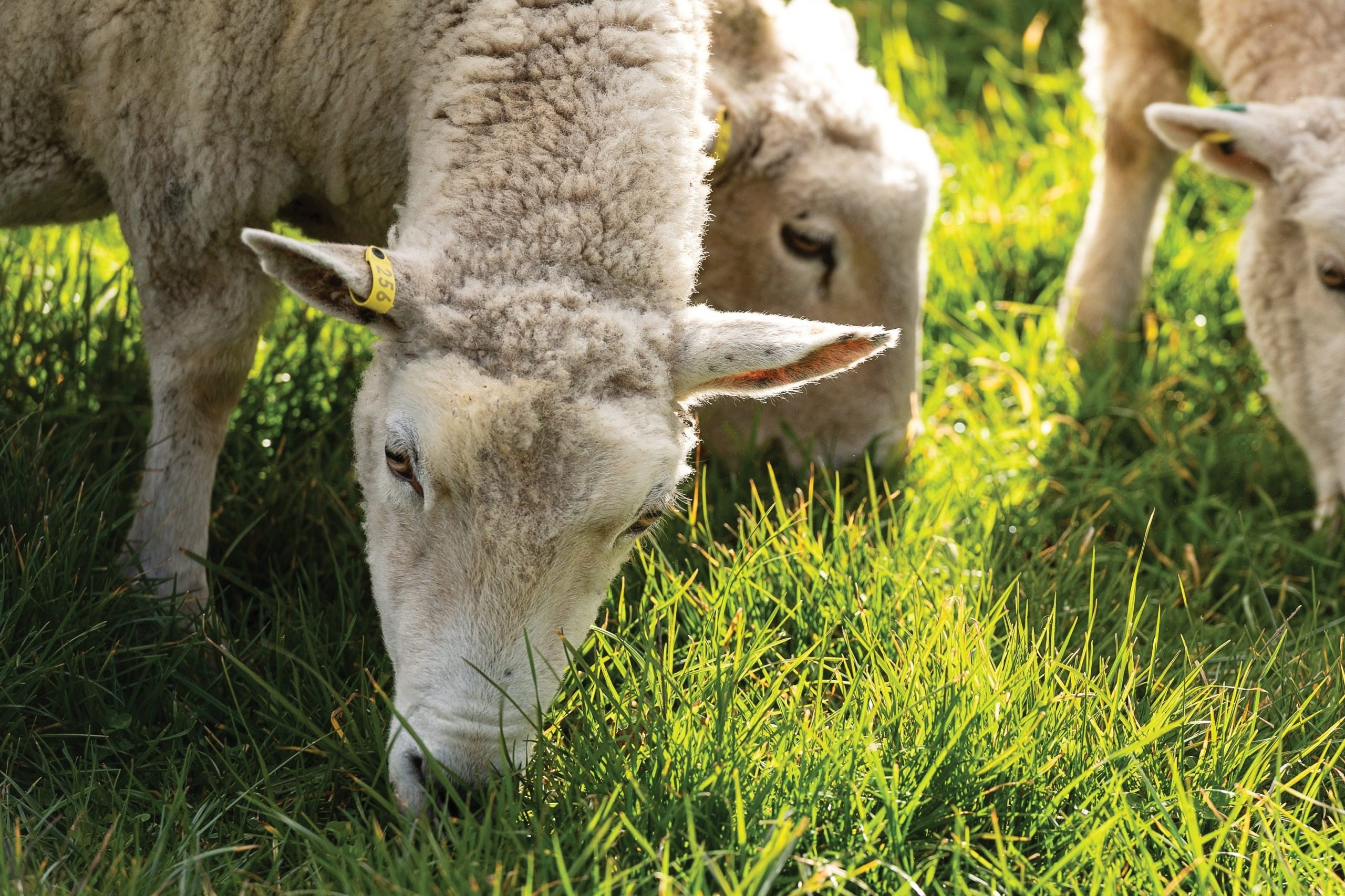Getting things right between now and weaning can help maximise the profit potential of a weather-affected lamb crop.
Lambing in the Tararua region has been impacted by tight feed conditions and rough weather this year. Reduced late winter, early spring pasture growth and widespread damage due to porina have resulted in low feed covers, light ewes and lower ewe milk production on many farms in the area.
While docking results are not yet fully in, a prolonged spell of cold, wet, windy weather has affected lamb survival.
Beef + Lamb New Zealand’s Wairarapa Farming for Profit programme ran a late-September workshop on turning lambs into profit. It was held at Mangamaire just south of Pahiatua.
The workshop was facilitated by Ed Harrison and Richmond Beetham from BakerAg, and featured practical tips from local farmers Peter Apthorp, Royden Cooper and James McKay.

Pasture quality is key post-docking, and all of the farmer panel adjust paddock stocking rates after it, typically with cattle, based on paddock tailing percentages.
The decision to drench lambs before weaning is made on the basis of feed covers, ewe condition and milk production.
While most agree that drenched lambs have fewer dags at weaning, some are not sure they are getting a liveweight response. Most use tape drenches, but a number simply use triple-combination products.
Many on the panel weigh and/or condition score ewes a month or so prior to weaning as an indicator of potential early weaning. Some also weigh lambs at this point as an annual benchmark and to forecast potential weaning weights and numbers of lambs prime off mum.
A tip is to dazzle (write) the weight on a lamb and re-weigh it at weaning so growth during the previous month can be calculated.
Some farmers rotationally graze mobs of ewes and lambs after docking to allow clover to develop in pastures and set up country for weaned lambs.
Planning the rotation is important, with mobs of 200 twin ewes and 300 single ewes on fast rotations (15 days) using five or six paddocks the preferred approach.
To reduce mismothering, farmers often open a gate between paddocks, let ewes and lambs drift, then go back and finish shifting the mob the next day. Mobs quickly become used to this system, coming to the gate to wait for it to be opened after a few shifts.
Weaning date decision
Most businesses wean lambs about day 90, but some wean fast-growing terminal lambs at day 60-70 to take advantage of heavy carcaseweights and a high early works schedule.
These terminal ewes and lambs have often been run on crops such as plantain/clover or pure clover prior to weaning. The keeper lambs are weaned back on to similar feeds where they continue to grow at very high rates.
Breeding farmers often monitor pre-weaning lamb growth rates and ewe condition and use this information to make weaning date decisions.
One farmer has a trigger point where they will wean if lambs are found to be growing at less than 200g/day in the last 30 days of lactation. Ewe condition is also important in deciding when to wean, weaning when the proportion of tail-end or lighter ewes exceeds 40% in a mob.
Minimising stress on ewes and lambs at weaning time is a key consideration, with some farmers spreading weaning over several weeks.
The number of lambs to be killed or sold store is often predetermined by monitoring and good record keeping at pre-wean drenching.
Some farmers weigh, mark and put lambs back with their mothers to make booking space and the day of weaning easier. This also offers farmers more control over lamb marketing and frees up time for dagging lambs on the day.
All of the farmer panel avoid shearing lambs at weaning due to the stress and associated risks to animal health. Some dag all lambs at weaning and shear later to avoid flystrike, while others apply chemicals to provide short-term fly protection.
Marketing lambs at weaning
The panel offered a number of practical tips for effective lamb marketing. Carrying out a yield test 10 days prior to the main weaning was considered a good idea. Underestimating yield can mean killable lambs are left behind, while overestimating it can result in lambs killing under the cut-off weight and getting penalised on price.
All farmers book space well in advance and communicate closely with the buyer or agent.
Farm weighing must be fair for both parties, with scales properly calibrated. It is important to manage time off feed when truck weighing lambs.
If weaning starts at 6am, lambs may have been off feed for nine to 10 hours by the time the truck makes the weighbridge. This is not fair for the breeder. Weighing and marking lambs earlier, running them back in on the day of weaning, and trucking with only three hours off feed may be a more effective strategy.
Lamb finishers do not want to receive stressed, drought-affected lambs that have been standing in dusty yards for a long period of time, so are often happy with a farm weight as long as it is accurate.
- Richard Gavigan is a farmer and wool technology teacher.





